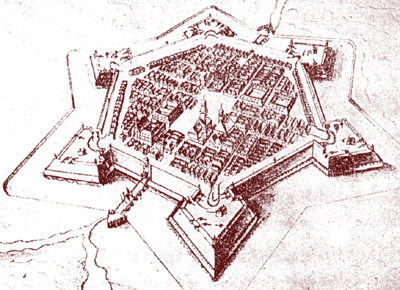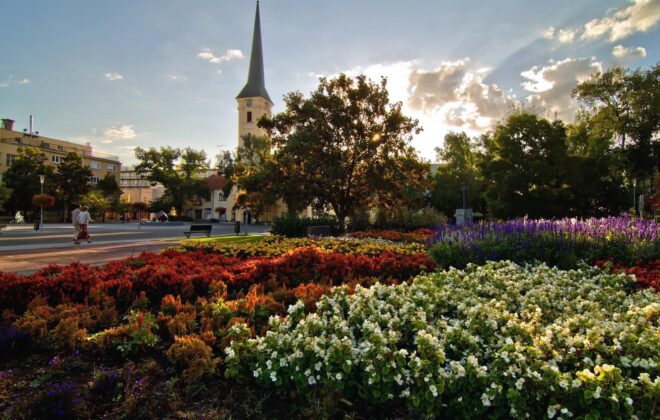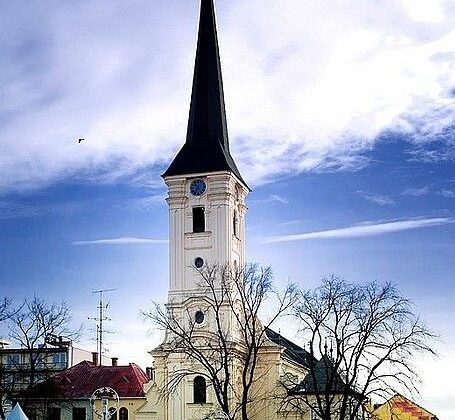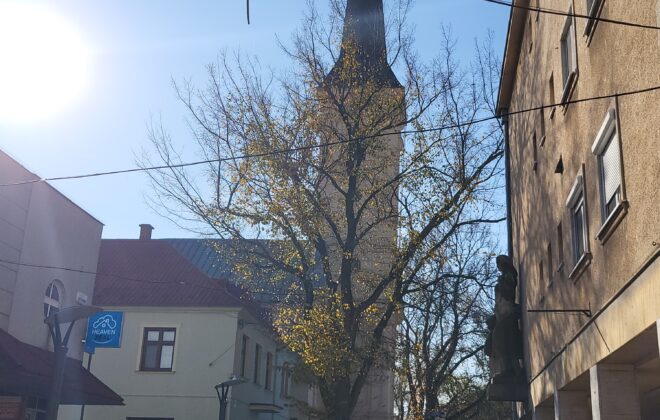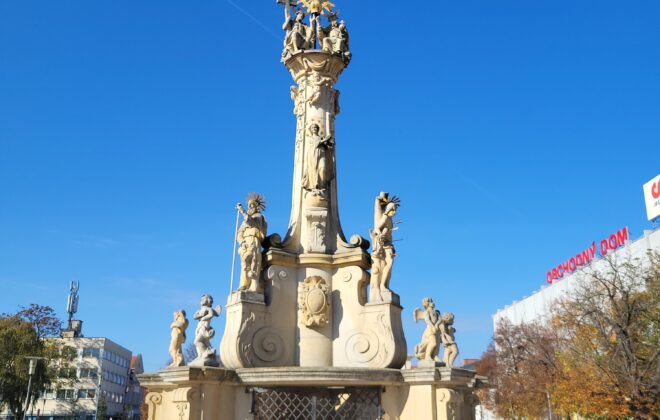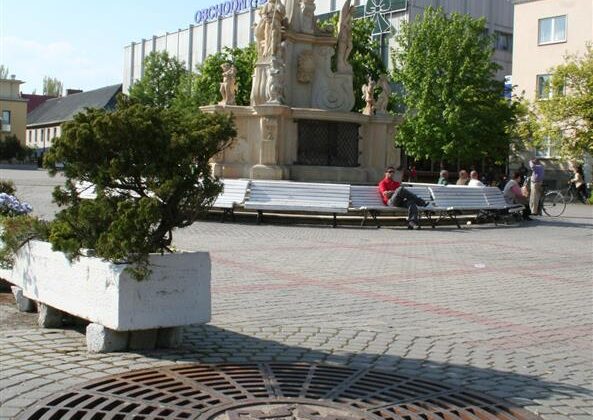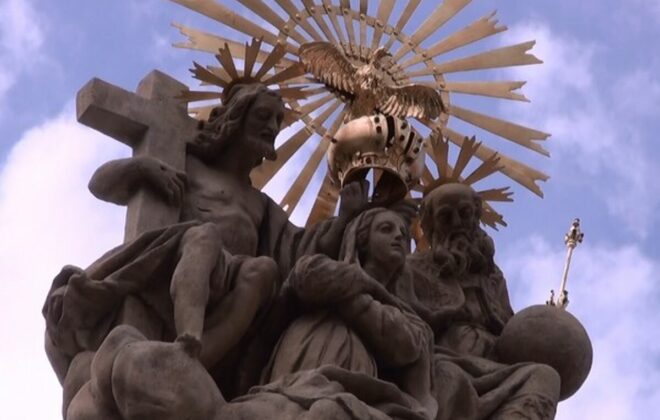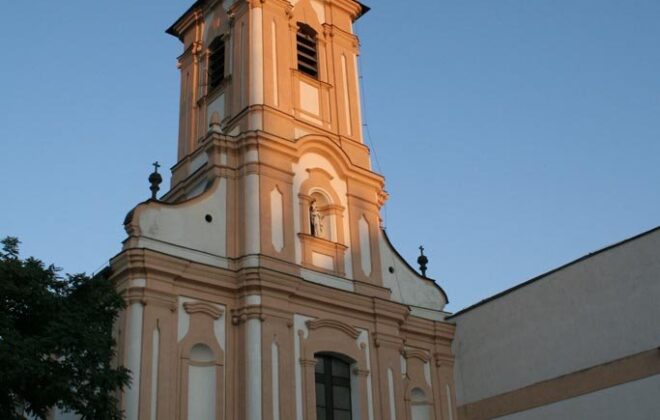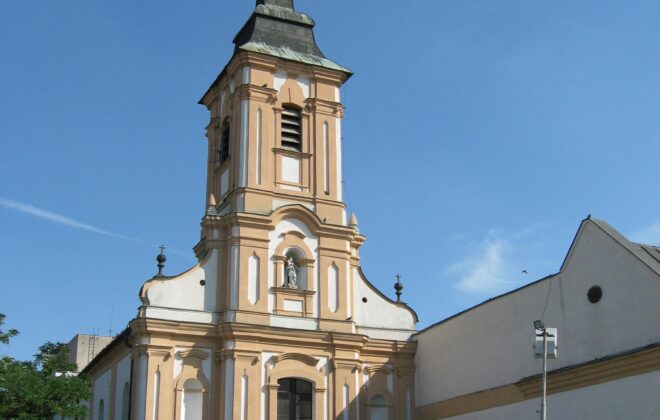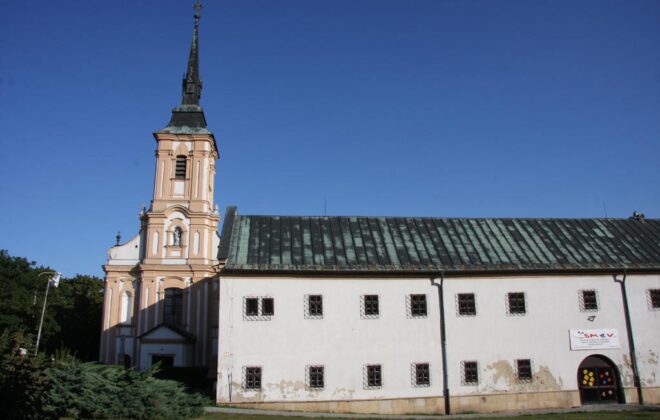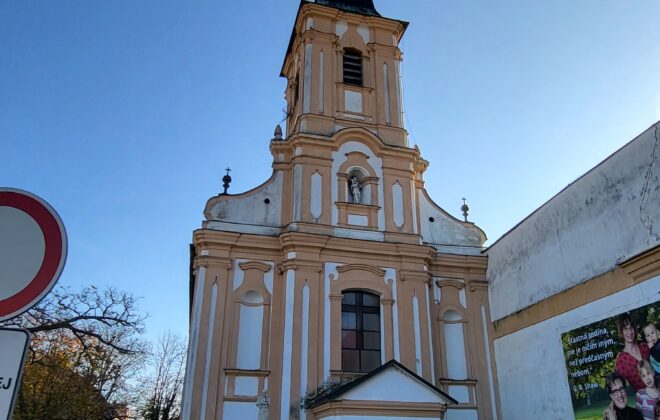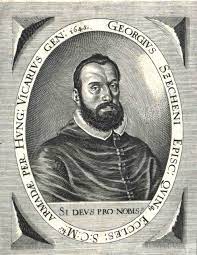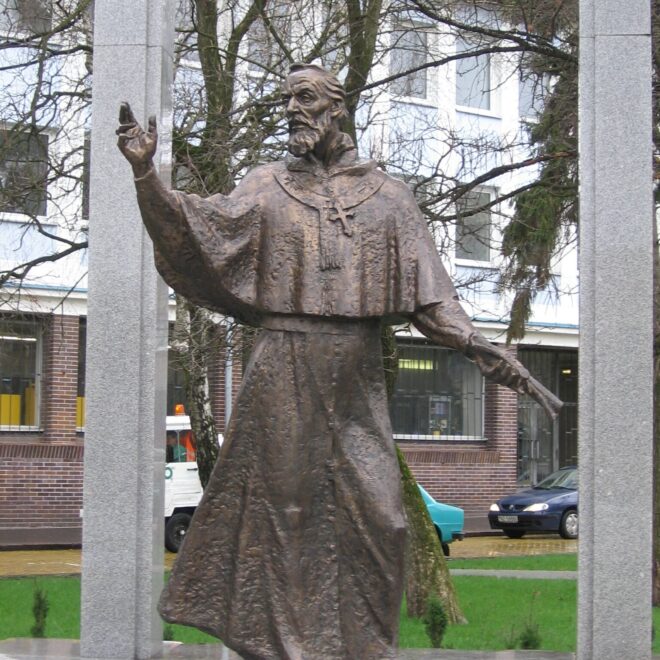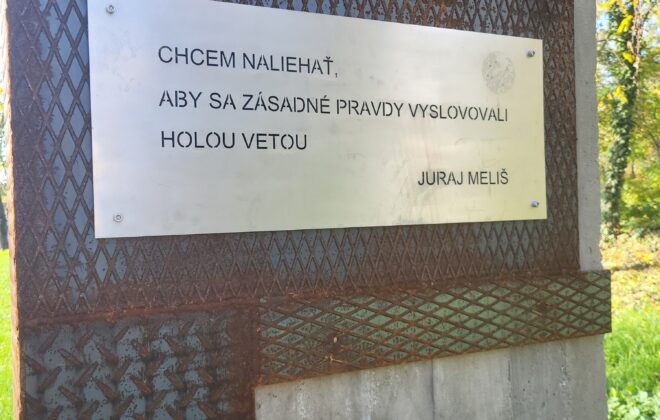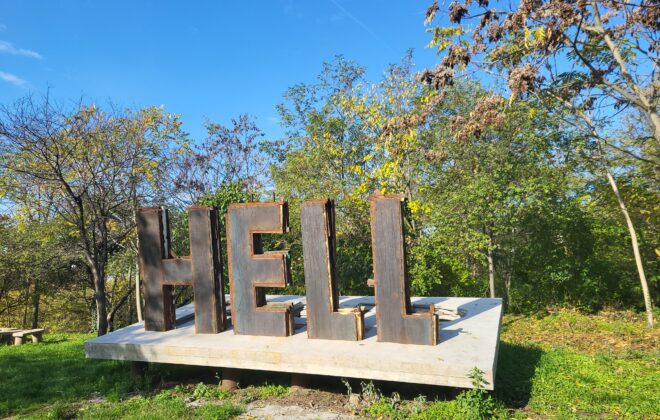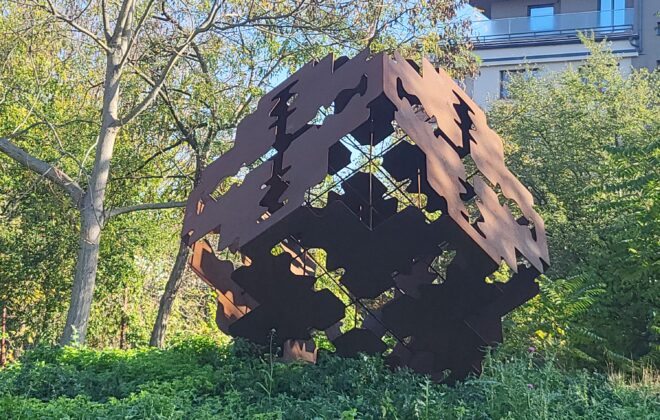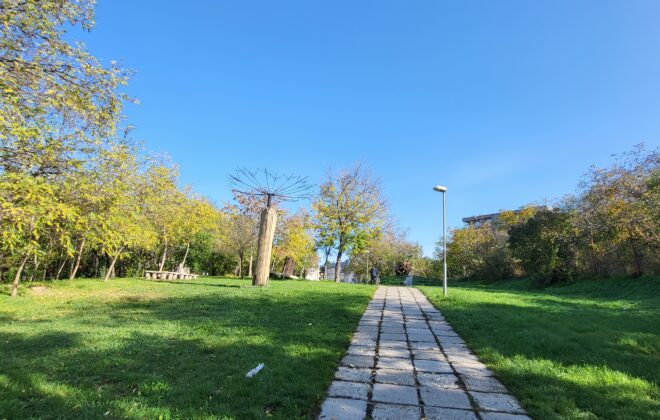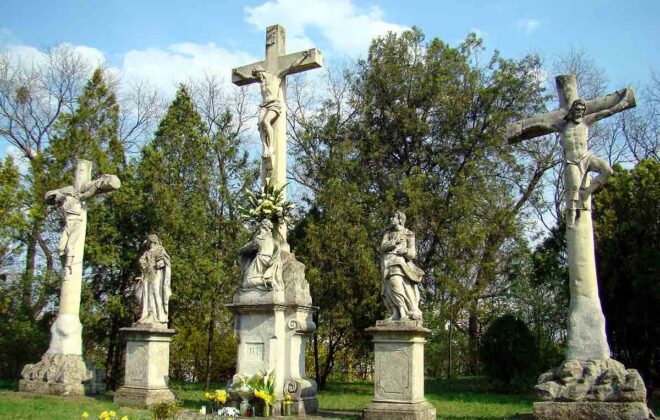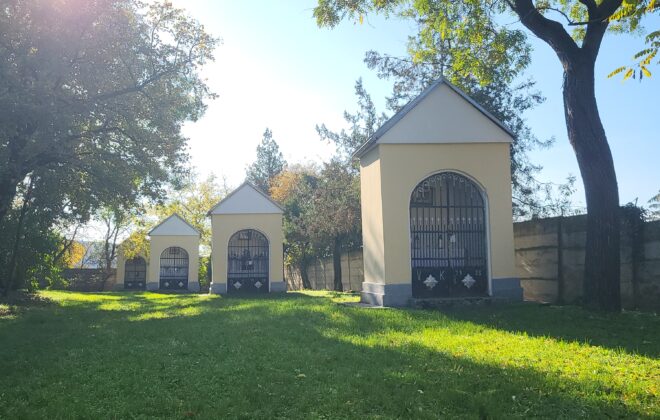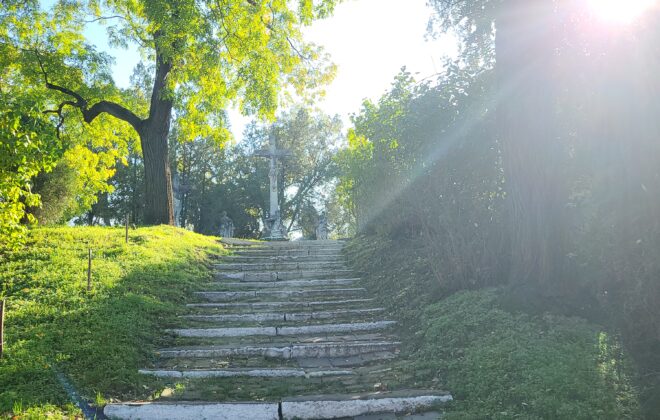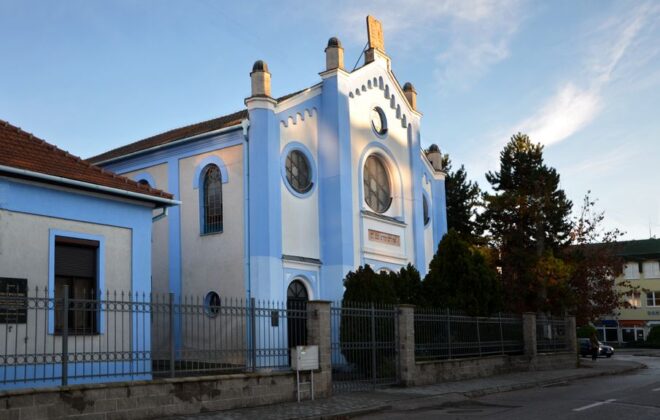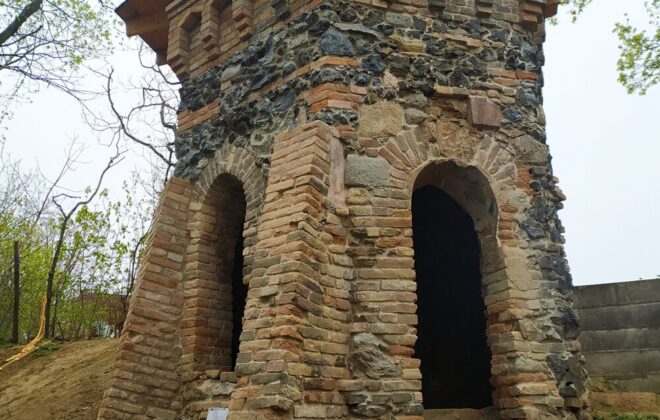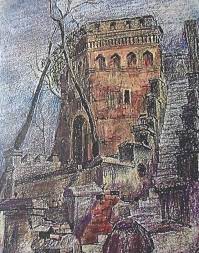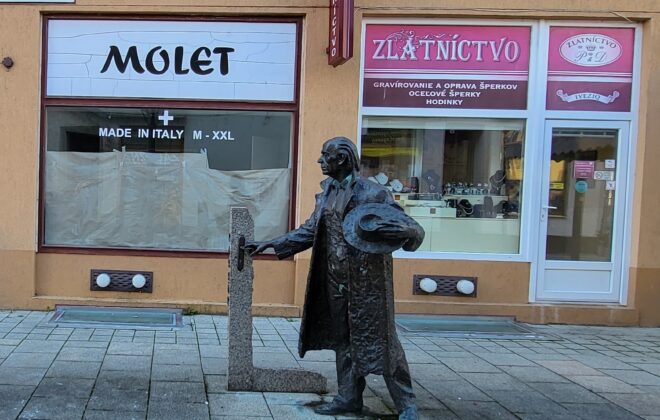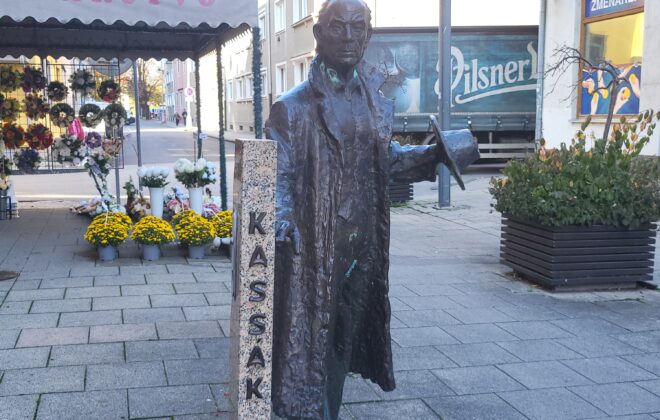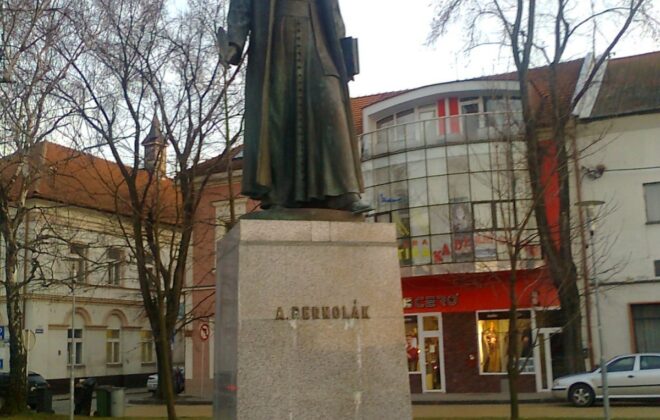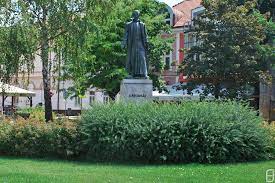
City Map
The Fortress of Nové Zámky
Nové Zámky emerged from a trading settlement, castle center and former villages Nyárhíd (1183-1663), Györög (1217- 1571), Gúgh (1214), and Lék (1315-1663). From the fourteenth century, it belonged under the archbishopric of Esztergom. The first fortress was built by Pavol Várday, archbishop of Esztergom in 1545. It was located on the left bank of the Nitra River as a part of the defense line against Turkish raids. The second stronghold was one of the most signifi cant European Renaissance fortresses. Construction took place from 1573 to 1580. Italian brothers, Giulio and Ottavio Baldigara created the design of the new fortress. The ground plan was shaped into a regular hexagon with a rectangular street grid and a central rectangular town square. The fort had six bastions. Their names are still being used today – Forgáchova, Česká, Ernestova, Cisárska, Fridrichova, Žerotínova. It was seized by the Turks in 1663, and in 1685 it was recaptured again. It was a glorious victory and the Pope ordered bells tolling all across Europe. The fortress was demolished in 1724. Its hexagon-shaped ground plan is depicted in the city’s coats of arms. The most signifi cant events, connected with the city’s history, are depicted on the pavement within the pedestrian zone, on M.R. Štefánika Street and Turecká Street – towards the main square.
1. Church of the Exaltation of St. Khríž
The Roman Catholic parish church dominates the Main Square. It was built in the second half of the 16th century. It was originally a late Gothic building. In the period when Nové Zámky was in the hands of the Turks, it was rebuilt and served as a mosque. In 1693, archbishop Juraj Széchényi had the church repaired, , whose coat of arms is located above the door inside the church. The building contains Gothic, Renaissance, Baroque, late Baroque, classicist elements. The parish church currently has four bells. The parish, which is part of the church, houses a bust of Anton Bernolák, the first codifier of the Slovak language, who worked here from June 1797 until his death in 1813.
2. Trinity of the Holy Trinity
The statue was laid on the Main Square in 1740 and ordained in 1742 probably at the suggestion of unknown Italian masters. It symbolized gratitude to God that the plague was over. The sculpture was created in the Baroque style with rouca elements. The column is conical in shape, decorated with a plant ornament. At the top is the Trinity. The second part of the Trinity is only a copy of the original and was created in 1993. Some of the preserved parts of the original 1740s can be seen in the Ján Thain Museum. In 1985 it was declared a cultural monument.
3. Bronze relief with inscription OL 1710
The site of ladislav Ocskaya’s execution site was first marked in 1929. In 1993, they removed the new pavement and a dark grey marble tablet was placed in its place. Its floor plan resembles a former six-bag neo-Nazi. Above it is a small cross, below it the year 1710 and the inscription Novum Castrum.
4. Franciscan church and monastery
The Franciscan church and monastery was founded in 1631 by Peter Pázmány. Above the entrance of the church is the inscription “Pax intrantibus” – “Peace by entering”. Four precious codes were discovered in the monastery library. In the 18th and 19th centuries it was renovated, marked by the events of world wars and communism. Its restoration was completed in 1989. The monastery building is built in the manner of medieval monasteries with a cross corridor and a garden of eden. Under the church there is a crypt, where representatives of the monastery, religious and secular personalities were buried.
5. Statue of Archbishop Széchényi
Archbishop Juraj Széchényi was a religious writer, founder of monasteries, Archbishop of Esztergom and Hungarian primate, who on October 29, 1691 granted city privileges to the New Castles. He studied in Trnava and Vienna, later he took care of the education of priests. On March 21, 1685 , he became archbishop of Esztergom. He died on February 18, 1695 in Prešpork (now Bratislava), where they are in st. Peter’s Cathedral. Martina’s body was stored.
6. Monument from the liberation of the city from Turkish occupation
Nové Zámky was one of the most important anti-Turkish fortresses in southern Slovakia. In Nové Zámky there were often units from bohemia and Moravia who took part in battles with Turkish raiders. In the park of Gergely Czuczor Elementary School with hungarian language of instruction there is a memorial in honor of the 250th anniversary of the liberation of the city from Ottoman rule. The stone base was supposedly made from the remains of a newly-built castle. Wreath-laying ceremonies are held annually at this memorial.
7. Statues in Meliš Park
One of the goals of the sculpture symposium in Nové Zámky is to pay homage to the sculptor and educator, the New Zealand native Juraj Meliš. He devoted himself to free and monumental sculpture , drawing and graphics. One of the founding members of Gerulata. Part of the multi-year project of the symposium is also the vision to rename the space at the Astronomical Cabinet into a park that will bear the name of this artist.
8. Calvary
Calvary was built in 1779 on the embers of the Forgách Bastion. It was founded by pastor Ján Martin Predmerszky. There are twelve symmetrically distributed studies in the area, the 13th is Golgoth and the 14th. Holy Tomb. The individual stages of the cross path were built in the late Barocal style. From the gate, built in 1923, the stone steps lead all the way to Golgotha. Here on the hill is embedded portal vault of red marble, originating from the local Franciscan monastery. The Chapel of the Seven-Demolished Virgin Mary with octagonal dome was built at the beginning of the XIX century. Opposite is the chapel of the Tomb of God. In 2011, a memorial plaque dedicated to the New Zealand captain, Count Adam Forgách, was unveiled at the entrance to the premises. Since 1963, Calvary has been registered in the list of national cultural monuments.
9. Synagogue
The Jewish community settled in Nové Zámky in the first quarter of the 19th century. Between 1859 and 1863, the Jewish religious community built its first synagogue, which was destroyed as a result of carpet bombing. In 1880, a second Orthodox synagogue was built. The Hebrew inscription above the entrance reads: “May this be your little sanctuary”. Before the Holocaust of 1938, there were 2,800 Jews living in the city. In 1944, the ghetto was established, and on June 12-15, 1944, Jews were deported to Auschwitz in two transports. Of these, 287 survived the Holocaust, or only one in ten.
10. Fogd's Bastion
Fogd’s bastion stands next to the Daily Seniors’ Cell, on Podzamská Street. Some mistakenly consider it to be a preserved remnant of the Neo-Nazi anti-Turkish fortress. But it had a completely different history. Around 1870, it was built on the site of Ernest’s bastion by a local enthusiast for the new history of the lawyer Károly Fogd. The hexagonal floor plan was supposed to commemorate the glory of the original Neo-Nazi fortress from the period of europe’s defense against the Ottoman occupation troops. It is built of various materials, dominated by burnt bricks with the initials KG. The bastion with the adjacent parchment used to be a popular place for New Zealanders to walk. However, it fell into disrepair for many years and was in danger of collapsing spontaneously. Together with the civic initiative, the city is trying to return the space to the most authentic state possible, reviving the park as a rest zone for residents and visitors of the city. Above the entrance to the bastion is located the coat of arms of the town of Nové Zámky.
11. Statue of Lajos Kassák
One of the most important personalities of the Hungarian and Central European avant-garde is Lajos Kassák. Born on March 21, 1887 in Nové Zámky, he died on July 22, 1967 in Budapest. The poet, writer, columnist, editor, artist and leader of progressive art movements in his hometown lived until he was seventeen years old.
Poetry, music and artistic activity resonate sensitively in his work. As part of a memorial ceremony in honor of the native of our city, a bust of Lajos Kassák was unveiled on October 30, 1992. It is the work of sculptor Miklós Borsos and is housed in the Art Gallery.
Poetry, music and artistic activity resonate sensitively in his work. As part of a memorial ceremony in honor of the native of our city, a bust of Lajos Kassák was unveiled on October 30, 1992. It is the work of sculptor Miklós Borsos and is housed in the Art Gallery.
12. Statue of Anton Bernolák
Anton Bernolák was an important Slovak Roman Catholic priest and linguist. He was born on October 3, 1762 in Slanica, Orava in an earthly family and died on January 15, 1813 in Nové Zámky. Since 1797 he has been a pastor in Nové Zámky. At the same time, he also worked here as dean of the newly-founded church district and administrator of the city school. He became known and recognized as the first codifier of literary Slovak, he is the author of the 6-volume five-language Slowar. On the Main Square stands a bronze statue of Anton Bernolák, created by the Slovak academic sculptor Jozef Pospíšil in 1937.
Nové Zámky Quiz




